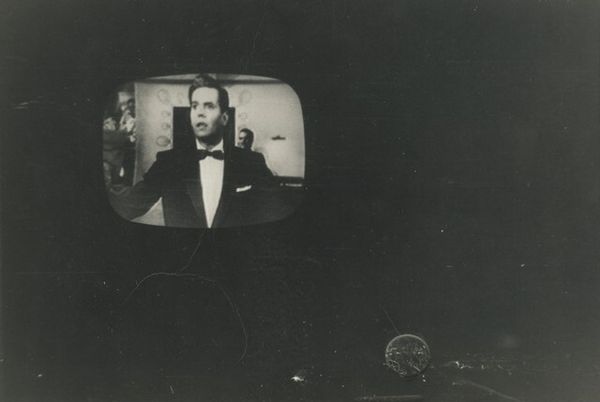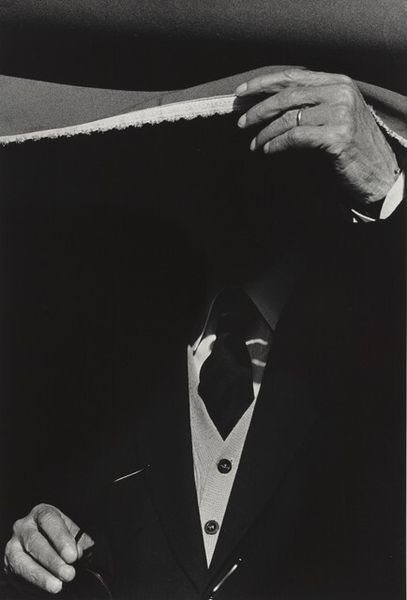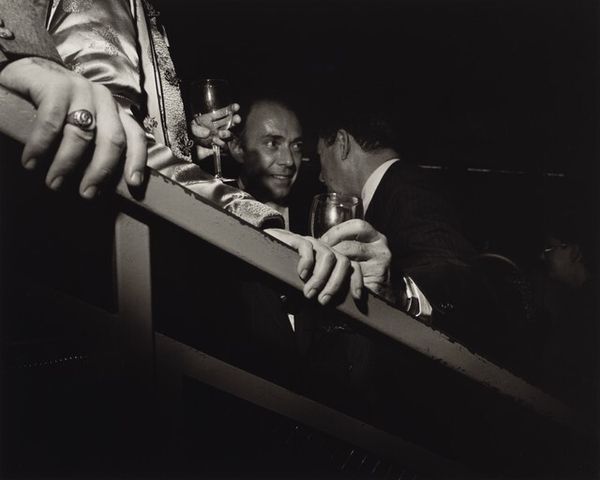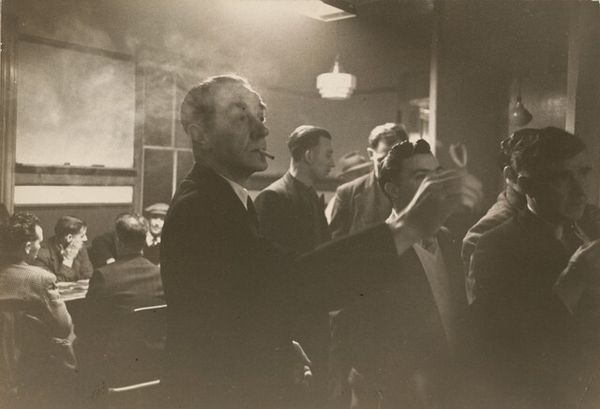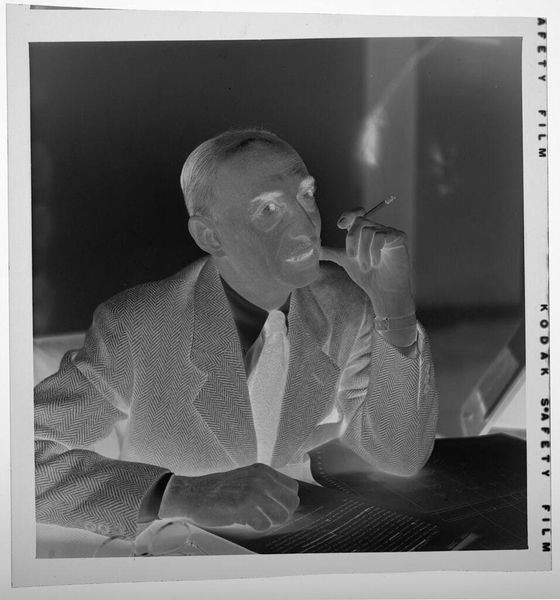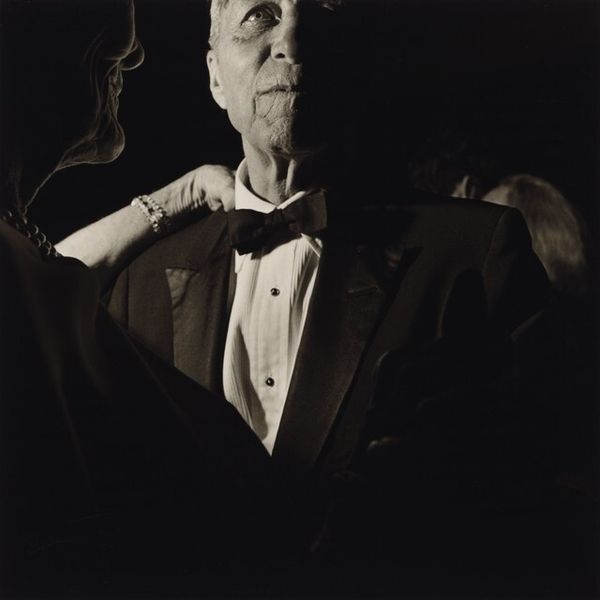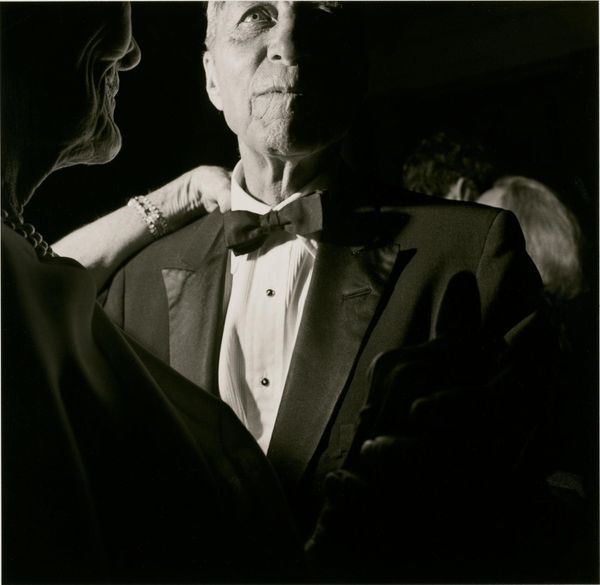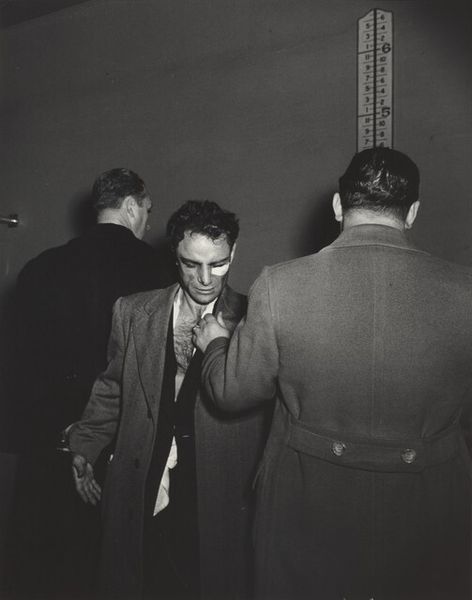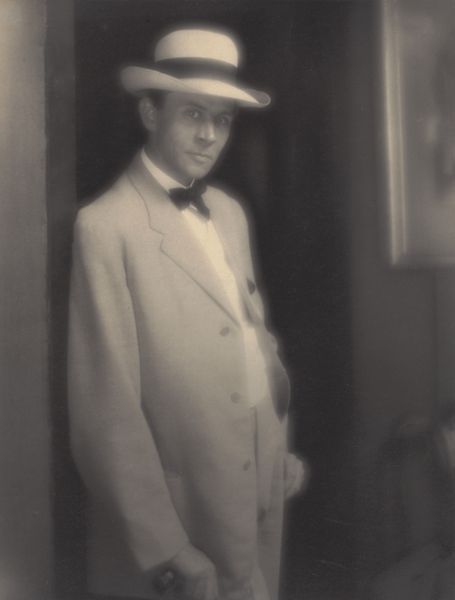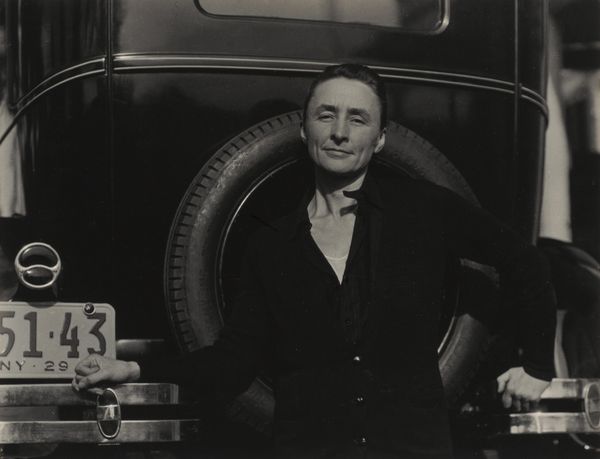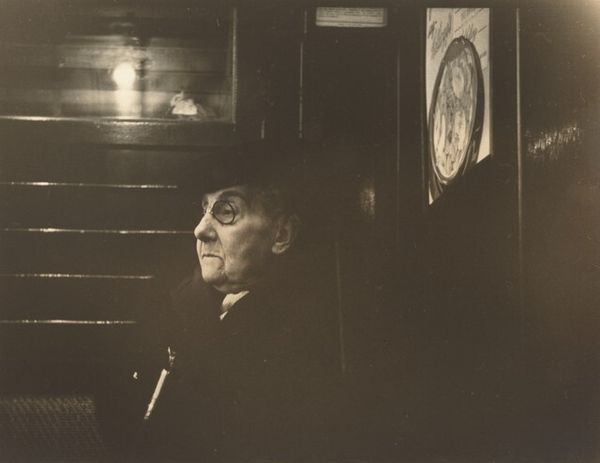
photography, gelatin-silver-print
#
portrait
#
black and white photography
#
photography
#
historical photography
#
black and white
#
gelatin-silver-print
#
monochrome photography
#
monochrome
#
realism
#
monochrome
Dimensions: image: 30.9 × 45.5 cm (12 3/16 × 17 15/16 in.) sheet: 40.5 × 50.5 cm (15 15/16 × 19 7/8 in.)
Copyright: National Gallery of Art: CC0 1.0
Editor: This is Larry Fink’s “New York City,” a gelatin silver print from 1982. It’s a black and white image, seemingly a candid shot of people at some event. There's a sense of exclusivity and perhaps a bit of social tension. What do you see in this piece? Curator: This work, for me, really speaks to Fink's consistent focus on documenting social dynamics. Given the time period, the early 80s, and the subject matter, which appears to be an affluent gathering, how do you think it might be read in terms of class and power structures prevalent in New York City at that time? Editor: I hadn’t really thought about it that way, I was focused on the sort of glamorous, but slightly claustrophobic feel of the photograph. The way some of the faces are obscured, and the stark contrast… it feels very voyeuristic. Curator: Precisely. Fink often positioned himself as an observer within these social circles. Consider the ethical implications of photographing these gatherings, particularly regarding consent and representation. What does it mean to make visible a world that typically operates behind closed doors? Does the work critique or perpetuate the status quo? Editor: I suppose it’s a bit of both. Showing the reality, perhaps even the superficiality, of these spaces could be a critique. But the act of photographing them also reinforces their importance, doesn’t it? Curator: Exactly. And it’s also important to consider Fink's own position as the photographer. How does his perspective, his potential biases, shape the narrative he presents? Is he an insider or an outsider? Editor: This definitely gives me a new perspective. It's more than just a snapshot; it’s a layered commentary on social dynamics and power. Curator: Indeed. Understanding the historical and social contexts allows us to engage more critically with the image and the broader themes it represents. It challenges us to question whose stories are being told, and by whom.
Comments
No comments
Be the first to comment and join the conversation on the ultimate creative platform.
